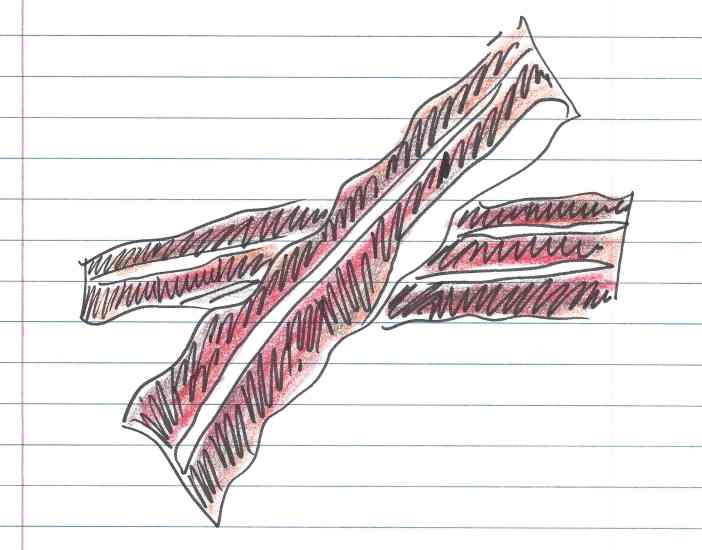The Panama Papers is a big leak pointing to some big names involved in some big money. Fortunately, at least for a little head like mine, some smart folks on the internet have been helping me understand this big news in some simpler terms: the piggy bank.
I’m not going to dive into the shell companies, tax evasion, or corruption associated with the secret offshore industry the Panama Papers is exposing, because, well, I got no further than piggy bank, thanks to the helpful explainers.
Where does this term piggy bank come from? I guess I’ll have to break it open and see what sort of etymological money is inside.

“Piggy bank”: a lexical ledger
A casual web search for the origins of piggy bank will yield various articles repeating a claim that piggy banks were originally made from pygg, a kind of “orange clay.” Through subsequent spelling and vowel changes in Middle English, this pygg evolved into the piggy associated with these “money boxes” today.
Hogwash. Mostly.
As far as the written record of piggy bank goes, here’s what we know. The earliest record of piggy bank is actually the American English pig bank, cited in the Jersey Journal in 1898. Etymologist Barry Popik points us to a particularly illustrative citation in a 1900 issue of The Oregonian: “The latest novelty — The Pig Bank. You have to kill the pig to get the money — 25c each.”
This early example indeed supports the classic concept of the piggy banks: They have to be broken apart to get the money slipped into its one-way slot. Aversion to, or the inconvenience of, this requisite destruction, so it goes, encouraged savings, as well as perhaps deterred theft.
Now, piggy bank as such is evidenced by 1913 in The Dietetic and Hygienic Gazette, according to the OED: “She could see everything quite plainly now; her little room with the pink roses climbing up the wall, her box of toys, — “Teddy was up-side-down, poor Teddy,” — her desk with the piggy bank on top of it.”
The OED does document another sort of pig bank in the mid 19th century, though this one appears to be unrelated. This pig bank refers to a small bank supplied with money by a larger one. (Perhaps the operant metaphor is that the small bank is fattened up like a pig?)
Rolling in the mud?
As far as the record is concerned, the term piggy bank is a relatively recent phenomenon, but the savings device is much older. Archaeologists have discovered money boxes used in ancient Rome, in medieval China, and even in 14th-century Indonesia, whose money boxes even took the form of pigs.
But why should these coin containers be associated with pigs in the first place?
We don’t have evidence of the kind of orange pygg many internet articles cite, but we do have record of pig referring to various clay vessels. In Scottish and northern dialects of English, a pig has named an earthenware crockery (e.g., pitchers, jars) since the 15th century. And piggy as an adjective and noun for “earthenware” have been found in Scots in the 20th century.
For the origin of this pig, the OED ultimately admits its ignorance, but it does make some interesting suggestions. Perhaps it is related to piggin, a “wooden pail,” though earthen or metallic in some regions. Or perhaps it is connected to prig, a “small metal pitcher.”
The OED also cites an analog in the Scottish pirlie pig, which the dictionary attests by 1799. Here, the pirlie refers to “poking” a coin out of the pig, a kind of “clay pot.”
And, as a Middle English dictionary suggests, the earliest known reference to this pig as a “pygg of wine,” was so named because the container was made from pig skin. (Despite appearances, this pygg is not the “orange clay” your cursory Google queries will yield.)
Etymology must often heed Occam’s razor. Piggy might just be a transferred sense of pig, as in, yes, the animal. Smallish, round vessels made from flesh-colored clay? Sure, they sort of look like little oinkers. (As for the actual etymology of pig, see my piece over at Oxford Dictionaries on the curiously obscure origins of some common animal names.)
Swine lines
So, let’s size things up: We have evidence of earthenware pigs in Middle English by the 1450s, Scottish pirlie pigs by the 1800s and piggies by 1950s, and American English pig bank and piggy bank by the 1900s. Record-wise, this is a pigsty.
As Michael Quinion suggest in his thoughtful discussion, we might well turn our attention away from lexical pigs to cultural ones for the origins of piggy bank. We find money boxes in various forms throughout early Europe, including in the form of pigs. Due to the food they provide and the farrow they birth, pigs became symbols of wealth, fertility, and luck, particularly in Germanic cultures. Immigrants, apparently, must have brought Sparschwein (a “saving pig”), for instance, to United States, where speakers applied a more literal label to this hog hoarder.
For as much as piggy banks may help someone like me understand the situation, the Panama Papers is evoking a different kind of pig symbolism: the greedy, capitalist kind.
